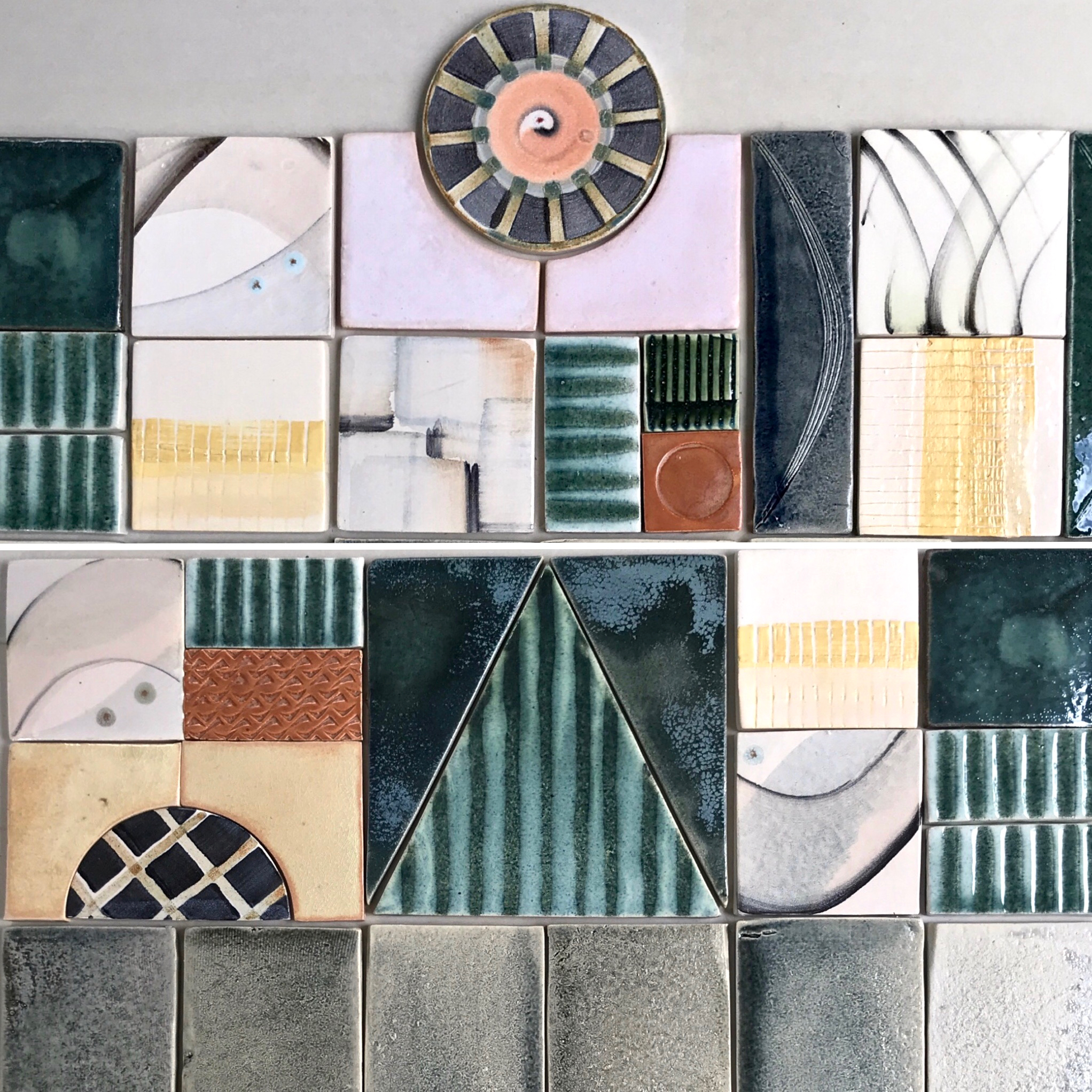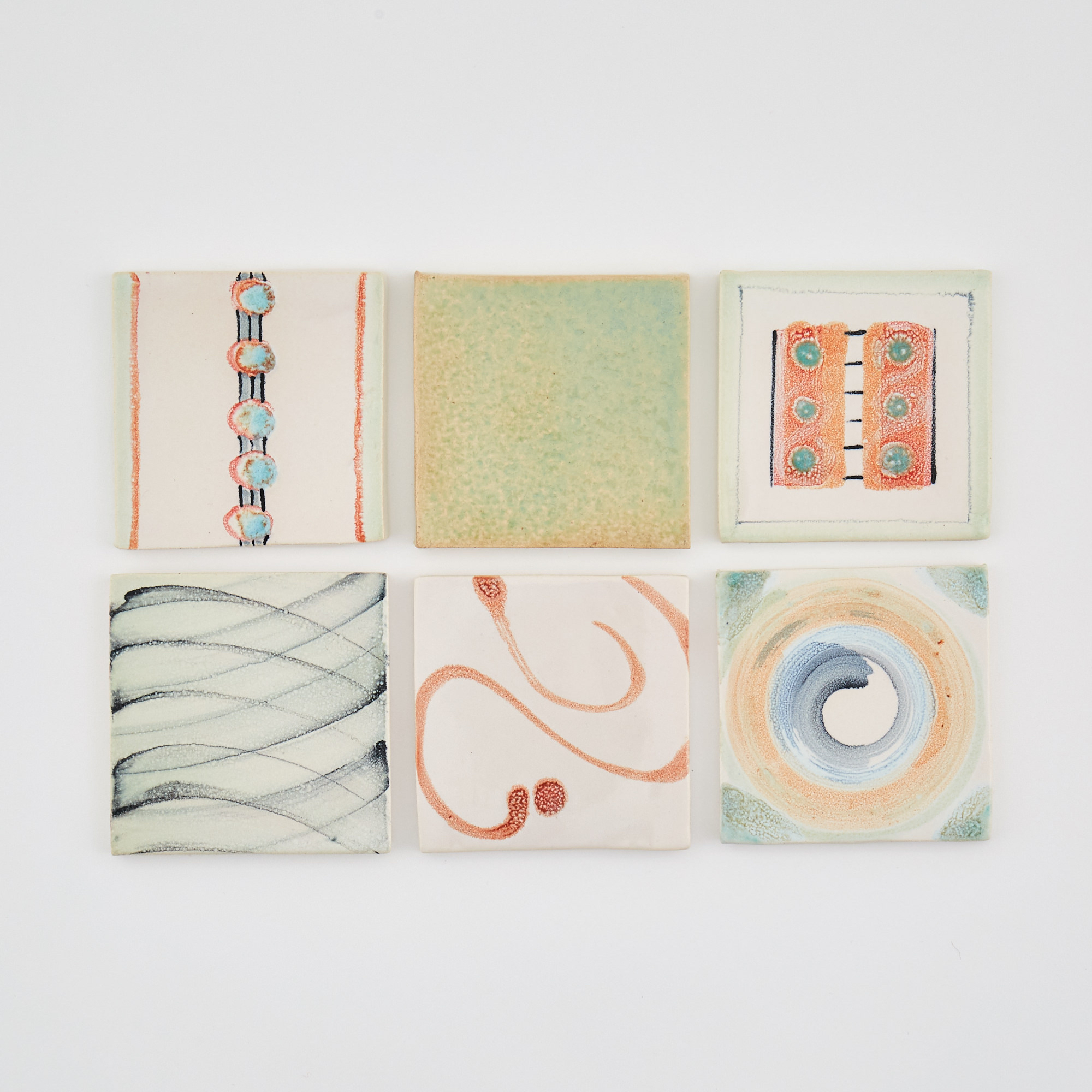Caroline Egleston talks about her journey from student at Lucy to ceramic artist.
Looking back, I can see a clear path, but it certainly didn’t feel like that at the time!
Before my undergraduate degree at Lucy Cavendish College, I’d travelled and worked in art galleries and at Sotheby's but become frustrated in my administrative/secretarial type roles. I wanted to study History of Art but that wasn’t feasible as a Part I, so I embarked on English Literature and then found I loved it and carried on to Part II. My research for each dissertation looked at links between the written and the visual, as seen in William Blake’s Song of Innocence and Experience and then the achievements of the Hogarth Press, started by Leonard and Virginia Woolf.
After three absorbing years came decision time: either Publishing, the Foreign Office… or..? During my vacations I’d discovered the world of Italian ceramics and had been on a language course and then ceramics course in Italy. There was a real head and heart moment when I found out about a course called ‘The Art of Maiolica’ in Faenza, near Bologna, in Italy. I visited the Istituto d’Arte per la Ceramica on a hot July day after a walking holiday, just before it closed for the summer and, somehow, managed to enrol.
By this time I was 31 and, again, a student. However, now I was able to teach English language as a Cambridge graduate, to subsidise my studies. I remember how kind and encouraging my Tutor, Dr Jane Renfrew, was about my decision…. which seemed like a further extravagance after three years’ studying.
I loved art; I was fascinated by art but somehow didn’t believe I could ever become an artist. However, I then became completely immersed in the making process and its creative challenges.
I returned to England in 1994 and set up my business ‘Piccolpasso’. I decided to concentrate on making handmade tiles, as I enjoyed the geometry of pieces fitting together, patterns playing off each other and felt that handmade tiles could be a niche business, practical artistry.
In the Hampshire village where I found a workshop, I met a fellow craftsman, Hugo Egleston, a cabinet maker and together we renovated some old cow barns. Now married and with two children, we enjoy a lovely, relaxed environment. Firstly, I fitted my work around the children. Then ailing parents. Then, about three years ago, time really opened up and I had the space to give the necessary creative input to my business, to develop my designs and think where I wanted to go. I now feel my business is finally becoming more successful and there have been several factors to enable this.
Firstly, thanks to the boost of a legacy when my father died, I was able to renovate my workshop to create a clean, white, inspiring environment. I improved my website, business cards & honed my aesthetic, articulating more confidently my visual language. The brushwork tiles which were my ‘maiolica’ heritage are now balanced with plainer tiles to give visual breathing space. I’ve become more fastidious about glaze testing, keeping notes and understanding technical issues to reproduce colours and textures.
Working alone can be isolating, struggling with technical and design issues, so I make a real effort to invite visitors to my workshop and to connect with other makers and artists. This includes asking for help when needed. I think initially I felt technically behind - everything was in Italian! Sometimes it takes time to know the right questions to ask.
Key people have helped me: fellow potters are generous with their expertise; a good (Squarespace) website designer and photographer; a stylist to help me arrange my work for shows; a great friend with an excellent ‘eye’ to look over my work when I can’t see where I’m going! Social media too - I enjoy Instagram – it is a useful way of connecting to other ‘creatives’ but also clarifies presentation - who I am and what I do .
I love the making process but I’ve had to learn many lessons (everything!) the hard way, through mistakes. Designs have to be worked out; visual language learned by observing how glazes work when fired.
My inspiration comes from a variety of unconscious sources, a lifetime of looking and absorbing. Enjoyment of colour, repeat pattern and texture and the dynamic way these elements play together. I feel I could have worked with textiles or in print making but clay is a wonderful material and the possibilities are endless. The element of surprise when opening the kiln keeps it endlessly fascinating and exciting. Glaze materials in their subtle variety suggest the diversity of the natural world. I love abstraction and brushwork, nothing figurative.
The white minimalism of kitchens and bathroom spaces has given way to individual decorative expression with colour and pattern and that’s great for my work! There seems a boldness to do things differently and I think Instagram and Pinterest encourage this.
Most makers supplement income by teaching and by applying for awards but I’ve bumped along, unable to earn more than a basic living from my business, until the time and freedom to create has expanded. It is a very fortunate lifestyle, however, travelling to my workshop in the garden each day.
Thinking back to Lucy Cavendish, I realise that studying for the Part II Tragedy paper under Chris Bristow was a turning point for me. He pushed me to delve deeper and then write to communicate. I may now seek to articulate meaning through decorative clay but the purpose is the same. Life is a series of small steps, ‘piccoli passi’…… steadily moving on through set-backs and delving deeper. There is still so much to discover.


You can see more of Caroline’s tiles on her website: www.piccolpasso.com
By Caroline Egleston. English Literature, 1989
The opinions expressed in this article are the author’s own and do not necessarily reflect the view of Lucy Cavendish College or the Lucy Cavendish College Alumnae Association.



